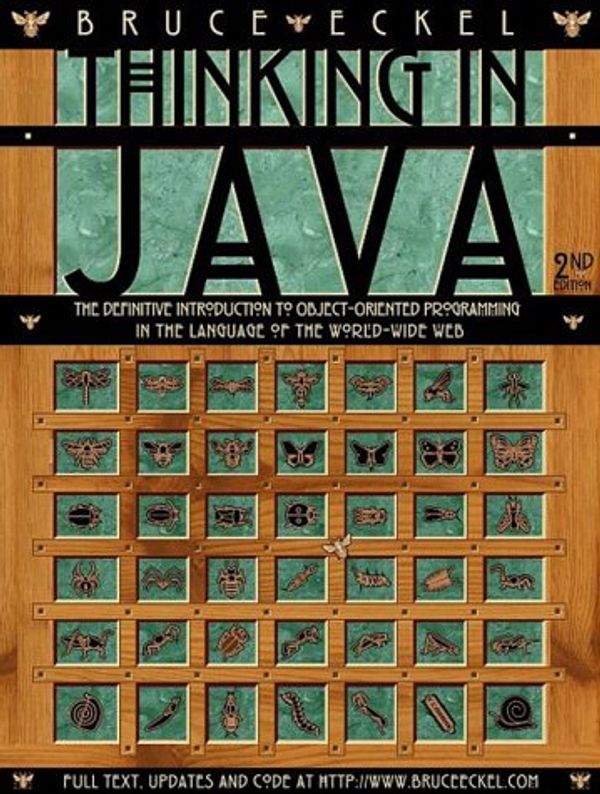Thinking in Java (2nd Edition)
The Definitive Introduction to Object-Oriented Programming in the Language of the World-Wide Web
Bruce Eckel

| ISBN: | 9780130273635 |
| Publisher: | Pearson Education |
| Published: | 1 January, 2000 |
| Format: | Book with Other Items |
| Language: | English |
| Links | |
| Editions: |
10 other editions
of this product
|
Thinking in Java (2nd Edition)
The Definitive Introduction to Object-Oriented Programming in the Language of the World-Wide Web
Bruce Eckel
Perfect for migrating to Java from a fellow object-oriented language (such as C++), the second edition of Thinking in Java continues the earlier version's thoughtful approach to learning Java inside and out, while also bringing it up to speed with some of the latest in Java 2 features. This massive tutorial covers many of the nooks and crannies of the language, which is of great value in the programming world. The most prominent feature of the book is its diligent and extremely thorough treatment of the Java language, with special attention to object design. (For instance, 10 pages of sample code show all of the available operators.) Some of the best thinking about objects is in this book, including when to use composition over inheritance. The esoteric details of Java in regard to defining classes are thoroughly laid out. (The material on interfaces, inner classes, and designing for reuse will please any expert.) Each section also has sample exercises that let you try out and expand your Java knowledge. Besides getting the reader to "think in objects," Thinking in Java also covers other APIs in Java 2. Excellent sections include an in-depth tour of Java's collection and stream classes, and enterprise-level APIs like servlets, JSPs, EJBs, and RMI. Weighing in at over 1,000 pages, any reader who is serious about learning Java inside and out will want to take a look at this superior resource on some of the latest and most advanced thinking in object design. --Richard Dragan Topics covered: Object-design basics Inheritance and polymorphism Object lifetimes Exception handling Multithreading and persistence Java on the Internet Analysis and design basics Java basics: keywords and flow control Initializing objects Garbage collection Java packages Designing for reuse: composition vs. inheritance The final keyword Interfaces and inner classes Arrays and container classes Java I/O classes Run-time type identification UI design basics with Swing Deploying to JAR files Network programming with sockets JDBC database programming Introduction to servlets JavaServer Pages (JSPs) RMI CORBA Enterprise JavaBeans (EJBs) and Jini Cloning objects The Java Native Interface (JNI) Java programming guidelines
Shop Preferences
Customize which shops to display. You can include the following shops by logging in to change your settings.
















